Surrogacy in Kyrgyzstan, is it better to choose single embryo transfer or multiple embryo transfer? The advantages and disadvantages of both

Embryo transfer isKyrgyzstan SurrogacySingle embryo transfer (SET) and multiple embryo transfer (MET) are key steps in the technique and have their own advantages and disadvantages.SET has a success rate of approximately 40-45% per cycle and a live birth rate of 20.7%-30.0%, which is safer and reduces the risk of multiple births but may require multiple attempts.MET has a much higher success rate (50-60%) and a live birth rate of 31.7%-47.4%, suitable for those who are older or have poorer quality embryos, but comes with multiple births and maternal and infant health risks. Age, embryo quality, surrogate mother's health and economic factors need to be taken into account when choosing, prioritizing the safety of mother and child. The final decision should be made in consultation with an expert to develop an individualized plan. In this article, we will explain in detail what SET and MET are all about. We will discuss the risks, the success rates and the doctor's recommendations. Finally, you will learn which option may be best for the surrogate mother.
What is embryo transfer?
embryo transferis a key step in the In Vitro Fertilization (IVF) process, which refers to the implantation of one or more embryos into a surrogate mother's uterus to help the embryos to settle and develop into a healthy fetus. The goal of this technique is to increase pregnancy success rates while ensuring the health of the mother and baby. There are two main approaches in embryo transfer: single embryo transfer (SET) and multiple embryo transfer (MET). Single embryo transfer significantly reduces the risk of multiple pregnancies, thereby reducing maternal and neonatal complications such as preterm labor and low birth weight. In contrast, multi-embryo transfer, while potentially improving pregnancy rates, is accompanied by a higher chance of multiple pregnancies, increasing the health risks to both mother and child.
Studies have shown that the success of embryo transfer is related to a number of factors, including the thickness of the endometrium (ideally ranging from 9-11 mm) and the quality of the embryos. In addition, embryo transfers can be categorized as fresh or frozen embryo transfers. Frozen embryo transfer, while offering greater flexibility, may increase the risk of cesarean section, macrosomia, and early miscarriage, differences that may be related to embryo freeze-thaw manipulation. In recent years, selective single-embryo transfers have become increasingly trendy, especially in young women, due to their ability to significantly improve pregnancy outcomes while reducing the incidence of multiple pregnancies. Overall, advances in embryo transfer technology offer hope for infertility patients, but the pros and cons need to be weighed on an individual basis to develop the best treatment plan.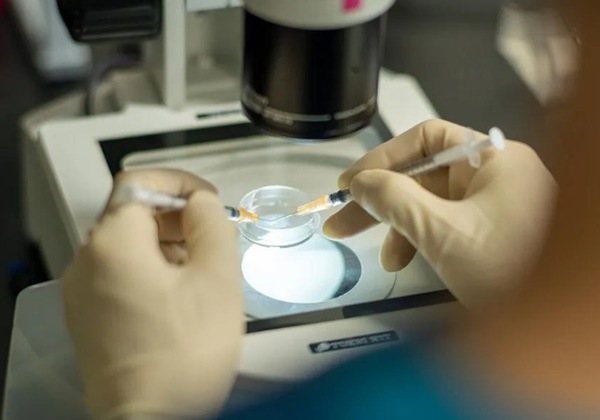
What is single embryo transfer (SET)?
Single Embryo Transfer (SET) is a technique in which a single embryo is implanted into a surrogate mother's uterus during In Vitro Fertilization (IVF), and is considered one of the safest options available.The core goal of SET is to enhance the health of the mother and child by reducing the risk of multiple pregnancies, while increasing live birth rates and pregnancy success.
Why SET?
The main reason for choosing SET is its significant health benefits for the mother and child. First, SET is safer for the surrogate mother. Multiple pregnancies increase the mother's risk of developing complications during pregnancy, such as gestational hypertension and diabetes. These health problems not only threaten the life of the mother, but may also affect the normal development of the fetus. Secondly, SET significantly reduces the incidence of preterm labor and low birth weight babies. Studies have shown that babies born from SET are healthier and grow up with fewer potential risks than those born from multiple embryo transfers. In addition, twin or multiple pregnancies can lead to more medical interventions, such as cesarean sections, and SET significantly reduces the chances of these problems occurring. As a result, SET not only improves pregnancy success, but also provides more stable health for mothers and babies.
Success rate of SET
The per cycle success rate for SET is usually around 40-45%, but this figure is affected by a number of factors including embryo quality and the state of the endometrium. Studies have shown that when embryo quality is high, the chances of SET success are significantly higher. For example, morphological scoring of embryos and genetic screening results can be important indicators for assessing embryo potential. In addition, advances in frozen embryo transfer technology have provided more flexibility in SET. While there are advantages and disadvantages to both fresh and frozen embryo transfers, frozen embryo transfers allow physicians to choose the optimal time for transfer based on the surrogate mother's medical condition, which can further improve the success rate.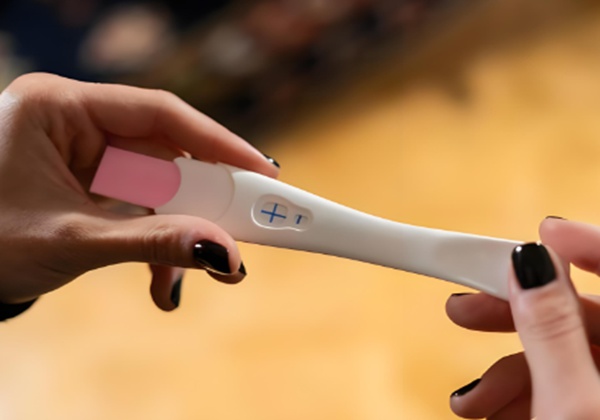
Risks of SET
Despite its many advantages, SET is not completely without risk. The main risk is that the first attempt may not be successful, resulting in the need for multiple IVF cycles. For some patients, this can be financially and psychologically stressful. In addition, the success of SET depends on the uterine environment of the surrogate mother. For example, an endometrial thickness of between 9-11 millimeters is considered ideal for transplantation. If the endometrium is too thin or too thick, it will affect the success rate of embryo implantation. Therefore, before performing SET, the doctor will usually conduct a thorough physical examination of the surrogate mother to ensure optimal conditions for the transfer.
Future Directions for SET
As reproductive medicine continues to advance, the use of SET is expanding. Studies have shown that Selective Single Embryo Transfer (sSET) combined with genetic screening techniques can further improve live birth rates while reducing the risk of multiple pregnancies. In the future, scientists hope that a more consistent approach to identifying the most suitable embryos for transfer and improved models for predicting live birth rates will make SET the preferred option for more patients. In addition, the development of personalized medicine will provide additional support for SET, such as developing optimal transfer strategies based on a patient's age, physical condition and embryo quality.
In summary, single embryo transfer (SET) has become an important choice in modern assisted reproductive technology due to its high safety, low complication rate, and significant benefits to maternal and infant health. Although there are still some risks involved, with the advancement of technology and the accumulation of clinical experience, the success rate and applicability of SET will be further improved, bringing the hope of fertility to more families.
What is Multiple Embryo Transfer (MET)?
Multiple Embryo Transfer (MET) is a key step in the In Vitro Fertilization (IVF) process and refers to the implantation of two or more embryos into the uterus of a surrogate mother. The main goal of this method is to increase pregnancy success rates, but it also comes with certain risks and challenges.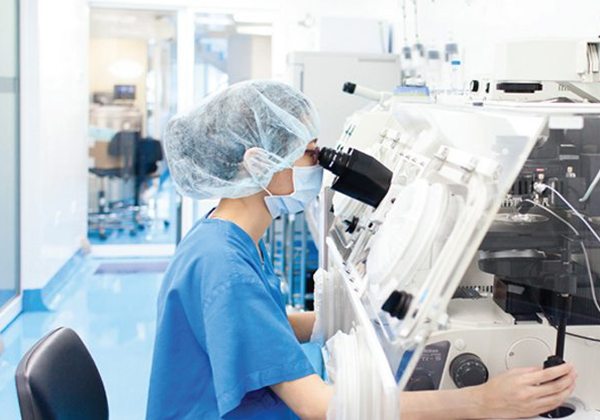
The main advantage of MET is its high success rate.
Studies have shown that MET can have a success rate of 50-60% per cycle. This is due to the fact that by implanting multiple embryos at the same time, the likelihood that at least one embryo will successfully land is significantly increased. This strategy is particularly important for prospective parents who have poorer quality or older embryos that may have lower survival or developmental potential. In such cases, choosing MET may be a more prudent way to improve the chances of pregnancy .
However, despite the higher success rates of MET, this does not always mean healthier pregnancy outcomes.One of the most significant risks of MET is the increased likelihood of multiple pregnancies. For example, a surrogate mother may become pregnant with twins or triplets, a situation that not only places a greater burden on the mother's body, but may also negatively impact the health of the fetus. The risks of a multiple pregnancy include preterm labor, low birth weight, and an increased likelihood that the newborn will require special care . In addition, surrogate mothers are more likely to develop complications during a multiple pregnancy, such as gestational diabetes, preeclampsia and high blood pressure . These health issues can be life-threatening for the mother and pose additional challenges throughout the pregnancy.
Another concern is that MET may reduce the success rate of single embryo implantation. According to US statistics, single embryo transfer (SET) actually has the highest success rate, while transferring multiple embryos may instead affect the probability of embryo implantation . This suggests that while MET increases the overall pregnancy rate, it does not necessarily guarantee that every embryo will successfully reach the surface and develop into a healthy fetus.
From a technical point of view, the implementation of MET also requires consideration of the quality of the embryo and the state of the endometrium. Studies have shown that an endometrial thickness between 9-11 mm is considered the ideal range and significantly improves the success rate of embryo implantation . In addition, the source of the embryos (fresh or frozen) may also affect pregnancy outcomes. For example, frozen embryo transfer is associated with a higher risk of cesarean section, macrosomia, and early miscarriage, and these differences may be related to embryo cryopreservation and thawing operations . Therefore, when deciding whether to use MET, physicians need to evaluate the quality of the embryos, the patient's age, the uterine environment, and other individualized factors.
In recent years, with the advancement of IVF technology, more and more experts advocate selective single embryo transfer (eBC-SBT), especially in younger women or with better embryo quality. This method not only significantly reduces the incidence of multiple pregnancies, but also improves pregnancy outcomes and reduces maternal and fetal complications . In contrast, MET is more suitable for patients with a history of recurrent implantation failure or poor ovarian function, but in these cases, the pros and cons still need to be weighed and careful decision-making is required .
In summary, multiple embryo transfer (MET) is a technique that can improve the success rate of pregnancy, but its accompanying risks of multiple pregnancies and maternal and infant health problems should not be ignored. In practical application, doctors should formulate a personalized treatment plan according to the patient's specific situation and balance the relationship between the success rate and health risks. In the future, with the further development of IVF technology, selective single embryo transfer may become a mainstream trend, bringing safer and healthier reproductive choices to more families.
Embryo transfer is a key step in assisted reproductive technologies (e.g., in vitro fertilization, IVF)
The choice of Single Embryo Transfer (SET) or Multiple Embryo Transfer (MET) has a significant impact on the health and success of the surrogate mother and baby. The main differences between the two are in the number of embryos, success rate per cycle, risk of multiple births, and health risks.
Comparison of SET and MET
In terms of number of embryos, SET transfers only one embryo, whereas MET transfers two or more embryos. This difference has a direct impact on the success rate per cycle: SET has a success rate of approximately 40-451 TP3T, whereas MET is as high as 50-601 TP3T. However, the high success rate of MET is accompanied by a significantly increased risk of multiple births, and MET tends to result in the birth of twins or triplets, which not only increases the risk of preterm labor and low birth weight, but also may have a long-term effect on the health of the babies. MET tends to result in the birth of twins or triplets, which not only increases the risk of preterm birth and low birth weight, but may also have long-term health effects on the babies. In contrast, SET has virtually no risk of multiple births and therefore has a safety advantage.
The impact of MET on surrogate mothers and babies is more complex and severe from a health risk perspective. Surrogate mothers in MET are more likely to develop complications such as gestational diabetes and preeclampsia, which can cause both maternal and fetal harm. In addition, babies born in MET are more likely to be born prematurely and require specialized care in the neonatal intensive care unit (NICU). In contrast, the health risks of SET are lower, and both surrogate mothers and babies face fewer health threats.
Although SET is safer, it has some potential problems. First, SET has a relatively low success rate per cycle, which means that multiple attempts may be required to achieve a successful pregnancy. If the first IVF cycle fails, the surrogate mother may need to undergo additional treatment cycles, which can add time and financial costs. However, it is worth noting that while the long-term costs of SET may be higher, their overall cost is usually lower than the cost of caring for twins or triplets. This is because multiples often require additional medical resources and support, including preterm care, NICU hospitalization, and subsequent growth monitoring.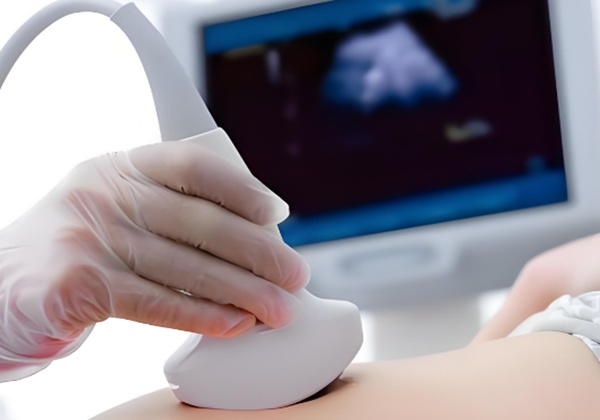
On the other hand, the high success rate of MET attracts many patients who want a one-time solution to their problems, but the accompanying high risks cannot be ignored. For example, the birth of multiple children as a result of MET can lead to a series of knock-on effects, including preterm labor, low birth weight, and developmental delays. For the surrogate mother, the physical burden during pregnancy is also significantly increased, especially if she is carrying more than one fetus at the same time, with a significantly higher incidence of complications such as gestational diabetes and high blood pressure. In addition, families with multiple births also have to deal with greater financial pressure and psychological burdens during childcare.
Integrated assessment and recommendations
Taking into account the success rates and risks, SET and MET have their advantages and disadvantages. SET, with its lower risk of multiple births and higher safety profile, is considered the more responsible choice, especially for couples who want to prioritize the health of the mother and child. For older women or those with lower ovarian reserve, MET may offer a higher success rate, but the resulting health risks need to be weighed.
In practice, physicians usually personalize the transplantation plan based on the patient's age, physical condition, reproductive history, and personal preferences. For example, younger patients who are in good physical condition are better suited for SET to minimize unnecessary health risks, while for some older patients, MET may be an option worth considering, provided that the potential consequences are fully understood and accepted.
In conclusion, in the field of assisted reproduction, SET and MET are two different strategies, each with its own applicable scenarios. Through scientific evaluation and rational planning, patients can find a balance between success rate and safety, thus realizing the goal of healthy reproduction.
Factors affecting decision-making
The choice of single embryo transfer (SET) or multiple embryo transfer (MET) is a critical decision in assisted reproductive technology and is influenced by a number of factors. First, the age of the intended parents is an important consideration. For older expectant parents, MET may be more appropriate because the quality and success of embryos decreases with age, and transferring multiple embryos increases the likelihood of pregnancy. In contrast, younger expectant parents typically have higher quality embryos, so they may prefer SET to minimize the health risks associated with multiple births.
Secondly, embryo quality plays a decisive role in decision-making. High-quality embryos have a higher success rate in SET, while lower-quality embryos may need to go through MET to increase their chances of getting pregnant. This means that SET is usually the safer option if the embryos are considered to be of good quality after screening; however, if the embryos are of variable quality, MET may become a compensatory strategy.
The health of the surrogate mother is also a factor that cannot be ignored. If the surrogate mother is in good health, SET is a safer option as it significantly reduces the risk of multiple pregnancies and their associated complications. However, if the surrogate mother has health problems of her own, such as a predisposition to high blood pressure or diabetes, the high risk of MET may be further magnified, necessitating a more careful weighing of the pros and cons.
In addition, legal and financial factors can influence decision-making. Many surrogacy protocols will specify the use of SET and MET, which may limit the viability of certain options. From an economic standpoint, while MET may be less costly in the short term, long-term medical and childcare costs can increase significantly in the event of a multiple pregnancy. In contrast, SET, although it may require multiple attempts, is usually more manageable in terms of overall costs.
In summary, the choice of SET or MET requires a comprehensive consideration of the age of the intended parents, the quality of the embryos, the health of the surrogate mother, and legal and financial constraints. A scientific evaluation of these factors, combined with the professional advice of a physician, can help intended parents make the best decision for their situation.
Success rate of SET and MET
Let's look at the success rates of SET and MET in more detail.
Success rate per cycle
SET : 40-45% Success rate per cycle .
MET: 50-60% Success rate per cycle.
live birth rate
SET : 20.7%-30.0% Live birth rate per patient .
MET : 31.7%-47.4% Live birth rate per patient .
Cumulative success rate
SET performed well when combined with frozen embryo transfer .
MET may work faster, but comes with higher risks.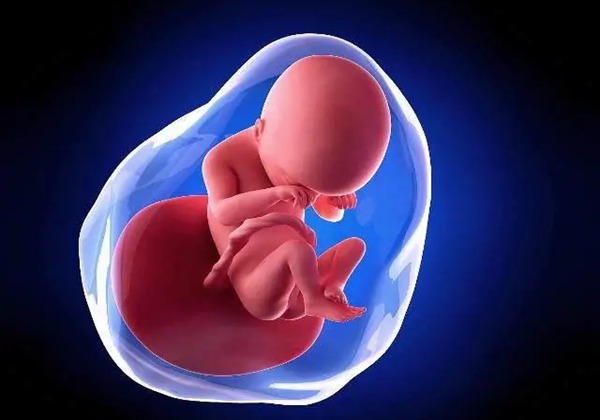
common problems
1. What are the main differences between single embryo transfer (SET) and multiple embryo transfer (MET)?
The main differences between SET and MET are the number of embryos, success rates and health risks.SET transfers only one embryo per cycle and has a success rate of approximately 40-45% with live birth rates ranging from 20.7%-30.0%. It significantly reduces the risk of multiple pregnancies and decreases the likelihood of preterm labor, low birth weight, and maternal and fetal complications, and is suitable for younger patients with higher quality embryos. MET, on the other hand, transfers two or more embryos with a success rate of 50-601 TP3T per cycle and a live birth rate of 31.71 TP3T-47.41 TP3T, but is accompanied by a higher risk of multiple births, which can lead to gestational diabetes, preeclampsia, and other health problems. In addition, SET may require multiple attempts and has lower long-term costs; MET, while quicker in the short term, has higher childcare costs for multiples. The final choice needs to be assessed based on a combination of age, embryo quality and health status.
2. Why do experts generally recommend selective single embryo transfer (SET)?
Experts recommend SET primarily for its greater safety and protective effect on the health of the mother and child.SET significantly reduces the risk of multiple pregnancies, thereby reducing the need for preterm labor, low birth weight, and neonatal intensive care. In addition, surrogate mothers face fewer health threats in singleton pregnancies, such as lower rates of gestational hypertension and diabetes. Although SET has a lower per-cycle success rate (40-45%) than MET (50-60%), it performs well in terms of cumulative success rate when combined with frozen embryo transfer technology. For younger women or patients with higher quality embryos, SET ensures pregnancy rates while avoiding the long-term financial and psychological burdens associated with multiple births. With the advancement of genetic screening technology, the success rate and applicability of SET will be further enhanced.
3. For whom is multiple embryo transfer (MET) suitable? What are the risks to be aware of?
MET is more suitable for older patients or those with poorer embryo quality, as embryo survival is lower in these cases and transferring multiple embryos improves the chances of pregnancy. However, MET carries significant risks of multiple births, including preterm labor, low birth weight, and increased need for specialized neonatal care. Surrogate mothers may also face complications such as gestational diabetes and pre-eclampsia, which can seriously affect the health of both mother and child. In addition, although MET has a higher success rate per cycle (50-60%), it does not mean that every embryo will develop successfully, and may instead reduce the probability of a single embryo's implantation. Therefore, the choice of MET needs to be weighed against the pros and cons, and the potential risks should be fully understood, and the decision should be made carefully under the guidance of a physician.
4. What are the key factors affecting the success of embryo transfer?
The success rate of embryo transfer is influenced by a number of factors, including embryo quality, endometrial status, and patient age. High-quality embryos (as assessed by morphologic scoring or genetic screening) have a higher success rate in SET, whereas lower-quality embryos may require MET to compensate. An endometrial thickness of 9-11 millimeters is considered the ideal range, with either too thin or too thick affecting the success rate of implantation. In addition, embryos from younger patients are usually of better quality and have a higher success rate than those from older patients. The method of transfer (fresh or frozen embryos) also has an impact, with frozen embryo transfer offering more flexibility but potentially increasing the risk of cesarean section and early miscarriage. Taking these factors into account and combining them with an individualized treatment plan can optimize the success of embryo transfer.
reach a verdict
When choosing between Single Embryo Transfer (SET) or Multiple Embryo Transfer (MET), a combination of advantages and disadvantages need to be considered.SET is safer for the surrogate mother and baby and reduces the risk of complications and multiple births, but has a lower rate of success per cycle and may require multiple attempts.MET, on the other hand, has a much higher rate of success per cycle, and is particularly suited to older expectant parents, but is accompanied by a higher risk of multiple births and health risks. Experts generally recommend prioritizing SET due to its greater long-term safety, but MET may be a more appropriate choice in specific situations. The final decision should be based on individual circumstances and fertility specialists should be consulted for professional guidance.